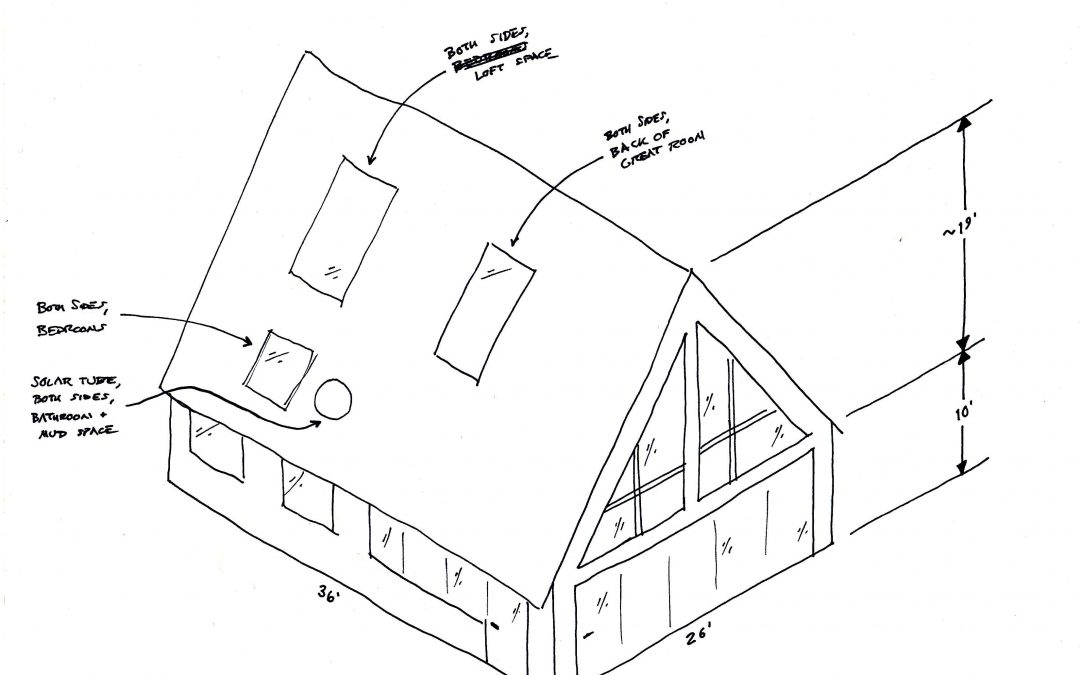
by William | Dec 9, 2020 | Net Zero
Dear Readers,
Thank you so much for sticking with us. I know our blogs have been a lot of research and ideas…although we just purchased a piece of land, we have a lot of design work to do before we start building anything!
As we began with Living Building Challenge: The Petal of Place, we want our lil’ home, The Seed, to meet Living Building Challenge standards (in addition to PHIUS, of course). In order to meet those standards, the home or building must adhere to the seven ‘petals’ and their imperatives. I know the term ‘petals’ sounds cheesy, but they do set a high expectation for how homes are built, lived in, and what they give back to the ecosystems they are located in.
The Water Petal alone is going to be a tough one to meet. However, it is a conundrum that we have already been pondering. Our goal is to rely totally off of our rainwater pillow for all of our potable and non-potable water needs. This, in turn, means that we need to live so water consciously that we are 100% all the time, 7 days a week, 365 days a year, prepared for a drought. It is not going to be easy, but if you have read our composting toilet and recirculating shower blogs, then you know that we have a few ideas bounding about. But are these ideas enough for us to meet the Living Building Challenge’s criteria for the Water Petal?

by William | May 27, 2020 | Prefabrication, Small Footprint
One look at the “unfolding module process diagram” or the “sketched section of folding roof” may result in some gawking, coffee-spitting, guffaws, and perhaps even the closing of this blog. All understandable!
If you have, however, continued to read this blog despite the drool that dripped from your gapping, gawking mouth…and despite the coffee that is now splattered on your screen and maybe keyboard…and despite the awkward stares you received from your side-splitting guffaws…thanks! We are crazy, we know.
So, here is a quick, simplified explanation as to some of the gibberish we’ve got running around in our brains…
Axonometric Sketch of Home
Our home will by no means be a ‘tiny’ home, but it will be a rather small-ish home! It will be 36’ long by 26’ wide on its first floor. The loft space will be about 23’ by 16’ and go above only the bedroom, bathroom, and mudroom areas. The total square footage is estimated to be about 1,304 square feet.
As you can see in the axonometric sketch (such a big word…) we really want to incorporate a high usage of windows…perhaps too many. But that fact is to be soon determined as we currently are also undergoing some cost analyses. All windows would have to have high R-values and be made by a Passive House certified window manufacturer- which also adds to the immediate price tag.
The skylights would illuminate the loft space, bedrooms, and the back section of the ‘great room’ (‘great room’ just sounds so pompous…). We would use what are called ‘solar tubes’ to bring natural light into the bathroom and mudroom area. Solar tubes are neat in that they are literally a tube in which the entering sunlight bounces around before it fills the larger living space, thereby creating a more even distribution of light.
Our home will be small. And depending on how many children we have, it is only going to get smaller. The ‘window walls’ you see at the front of the ‘great room’ are not stationary, allowing our small space to get larger. They can fold to allow the home to be made almost entirely open to the outdoors. The windows above the sink and kitchen area will also be foldable- thereby creating an open bar to the deck outside. A great example of how these guys work is to take a look at Zola’s “BreezePanel Folding Walls” (William drools everytime he watches the video).


